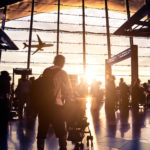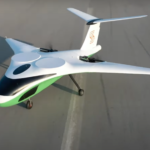Alan Peaford MBE, editor-in-chief at FINN, looks back at 2022.
It seems incredible that it is only a year ago that the Omicron variant of Covid was identified, throwing hopes of a year-end recovery into doubt.
But even by the time the new year celebrations had just about fizzled out, airlines were working hard with their MRO providers to bring aircraft out of mothballs predicting greater demand as countries were cutting back on restrictions.
In the UK, the serious doubters were the airports who had fallen into the trap of believing everything they read in the newspapers. The general media of course often loves a villain and despite having proven the true value of aviation’s value during Covid, the UK press predicted people would not want to travel by air.
Fast track to school and peak holiday times. Airports were under-staffed and unprepared for the hordes of people anxious to meet up with relatives, take holidays in the sun – and (always forgotten in media reports) business people heading for events and meetings to rekindle corporate relationships.
Heathrow chaos
Heathrow even got as far as rationing aircraft movements in order to reduce access to the four-hour queues for passengers entering or exiting the London gateway.
It was, perhaps, the most embarrassing time for the UK’s travel reputation and was delightfully addressed at the Farnborough Airshow in July by the Emirates airline president Tim Clark who along with IATA secretary general Willie Walsh (the former BA chief executive) slated the airport operators for the failure.
Elsewhere there were far more serious issues.
Ukraine war
The Russian invasion of Ukraine stunned the world. Geopolitical issues always have a negative effect on air travel – and the rise of the fuel costs damaged the economic recovery of the airlines. With fuel representing more than half of an airline’s cost, prices rose.
A focus turned on the defence industry. The need for Ukraine to defend itself against a superpower put the attention on how technology and a massive will gave the way to level the playing field.
In Saudi Arabia we saw the first World Defense Show, where the Middle East region’s own conflict had emphasised the need to negate the impact of kamikaze drones, gave the defence industry the opportunity to showcase the latest technologies – and find a willing partner and investor in the host nation. As a first show this was an incredible success and looks set to have a permanent place on the global aerospace event scene.
The first whole-industry showcase though was Farnborough. The global show brought the industry together for the first time since Le Bourget in 2019. The atmosphere was almost festival.
Leadership from manufacturers around the world came in person to press the flesh, show off the latest technologies and address the key issues of sustainability, future workforce and diversity.
Gender equality
With challenges in the supply chain often with staff shortages being cited as the reason, no wonder than gender equality seems to have stepped up. I attended a number of Women in Aerospace/Aviation/Defence discussions around the world and there were clear signs that change is happening.
In Africa 2022 saw women named as secretary general of the African Civil Aviation commission; chair of the African Airline Association and the CEO of Rwandair the chair designate of IATA – who as well as being the first woman in the role also is the first African. May those winds of change blow even stronger in the year ahead.
Finally, highpoints for me have been in the progression in advanced air mobility (AAM) and eVTOL awareness. By my reckoning there are now around 1,000 projects circulating among investors, business angels and grant givers. Around 8,000 orders have been placed.
AAM reality
It is my belief that as we enter 2023 that number will start to disappear. Dreams, and possibly some fortunes, have been made and lost. Some of the higher profile ones cushioned in early development by those deposits will collapse as the reality hits.
There will be some consolidation, there will be others just abandoned. But there will be a maturity of sound prototypes from companies with an aerospace/aviation background who understand the barriers of certification and air transport economics that will make the grade.
I for one look forward to the day I can step into an hybrid or eVTOL and watch the pilot (there surely will be one) as she takes us off to a new era in this great industry of ours.
Happy new year.
Subscribe to the FINN weekly newsletter

